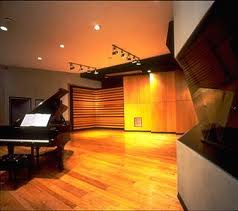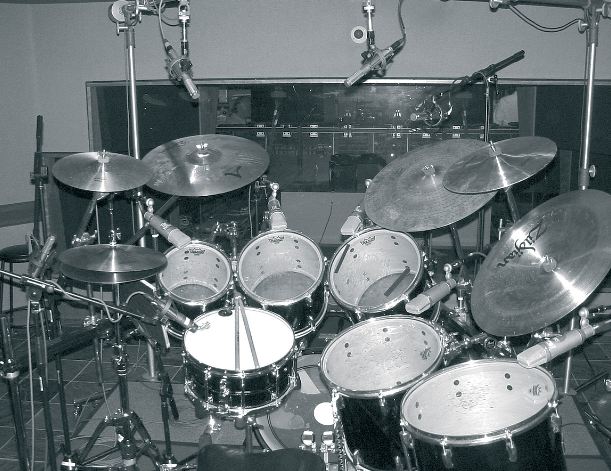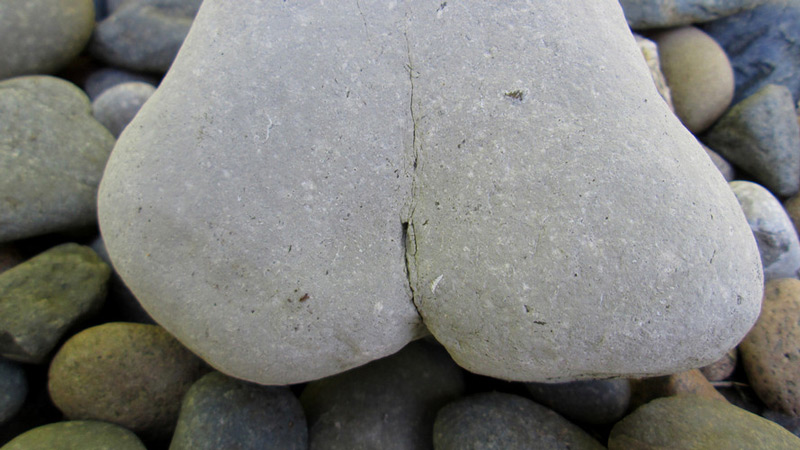Separate Rooms: Live Rooms
 The next focus of equal importance would be the Live Room where the music is recorded. This is where the musicians and vocalists perform on the microphones. Live rooms should have more versatility to be able to adapt to different recording situations. Wood floors for example are great for reflection of sound, which creates a brighter tone. If a warmer tone is wanted, one could simply place a rug on the floor. Many live rooms also have a great deal of glass to see between rooms for communication. This is also very reflective. Many studios use curtains to control the amount of reflections coming off glass or hard walls. Non-parallel walls are again needed to eliminate any flutter echoes.
The next focus of equal importance would be the Live Room where the music is recorded. This is where the musicians and vocalists perform on the microphones. Live rooms should have more versatility to be able to adapt to different recording situations. Wood floors for example are great for reflection of sound, which creates a brighter tone. If a warmer tone is wanted, one could simply place a rug on the floor. Many live rooms also have a great deal of glass to see between rooms for communication. This is also very reflective. Many studios use curtains to control the amount of reflections coming off glass or hard walls. Non-parallel walls are again needed to eliminate any flutter echoes.
Some studios also contain a vocal booth within the live room. This would be a smaller room designed for vocals. They may also be used for guitar amps and other instruments. There are no rules for what this can be used for; its main purpose is for additional isolation during the recording process. Glass doors or windows are used for visibility of the artists and those working in the control room.
Many elaborate studios may have multiple control rooms and production suites. Lounges and proper bathroom facilities are important in keeping the creativity flowing. A dining area and kitchen are also a consideration if budgets permit. Many hours are spent in the studio when working on projects. It is important to have all the comforts of home to keep everyone happy.
A few proper offices are necessary for the client to be able to have private internet access and to handle business without any distractions. All studios are designed differently. Whatever can be imagined can be created. There are no rules, only guidelines.
Acoustics
Sound is a wave, much like the ripples on a still body of water when a rock is dropped into it. The larger the wave, the lower the tone. Lower tones, known as bass frequencies, travel in wide long waves while higher tones known as treble frequencies travel in a tighter, shorter wave. Frequencies heard by the human ear range from 20Hz to 20K. Just as an indication, a piano’s range, probably the widest range of any instrument, is from 39Hz on the low note and 3Khz on the high note.
Sound is measured in decibels also represented as dB. An average concert is about 95-100 dB while a heavy rock concert or hip hop concert could reach levels of 130dB. This is above the threshold of pain; so don’t forget to wear your earplugs which are designed to protect your hearing when in extreme sound levels. Interestingly enough, whales can actually produce levels of up to 180dB. It should be remembered that taking care of your ears is the most important thing you can do to prevent damage and have a sustained career. So don’t hang out with any whales and put some protection in your ears when exposed to loud volumes.
Absorption is the act of a sound wave being soaked up by a particular material. This is measured by co-efficient ratings. The higher the sound absorption co-efficient rating, the more sound that is being eliminated from troubled spots in your room. Different section of the room may require different co-efficient ratings. Remember that studios start off as an empty shell. Hard surfaces and walls need treatment to provide for a great sounding room. For example, 20 gauge theater curtains are commonly used in studios. They consist of a thick velvet material, which is excellent for absorbing high-end frequencies. The thinner materials soak up higher frequencies.
The thicker materials soak up lower frequencies. This is why thick bass traps are very large and contain ports or holes to trap low-end frequencies. The larger the port, the lower the frequency absorption.
There are endless amounts of products and designs that are used in the industry. Wall panels are also commonly used to absorb sound. These are made from a fiberglass product wrapped in a cloth material. Various sizes and thickness are used for problem frequencies. Again the thin materials eliminate high end and thicker materials absorb low end.
Reflection is the opposite of absorption. Think of the sound as a wave hitting a mirror and bouncing back. This can be used as an advantage for a brighter tone. If a room has too much absorption causing the room to sound too dead, hard surfaces such as wood panels can be placed in strategic locations to add a more live sound to the room.
Some studios have reversible hanging panels that can be flipped between reflective and absorptive to change the room sound at will. For vocals the room may need a more dead sounding absorptive room. Drums may require a more live sounding room. John Bonham, from Led Zeppelin had an amazingly huge live reflective drum sound. This became the goal for the big Rock drum sound.
Prince is underestimated as a drummer. He has a great tight drum sound on his first record where he played all of the instruments as well as the drums. The drums have just the opposite effect using absorption in a small tight room creating a very in your face heavy Pop drum sound.
These are not rules, only guidelines. Using your ears is always the key to getting the best sound.
Designing a studio is quite an undertaking to do professionally. Each room is completely separated and isolated from one another. The most common method is to actually build a room inside of a room. The inner walls do not touch the outer walls, which creates an air gap that traps sound. Each wall can be many feet thick and multiple layers of thick glass and doors divide the rooms.
The floors in each room are floated from the ground with spacers that also create an air space to lower vibrations and help to trap unwanted sound leakage. All floors have different characteristics in the way sound waves bounce off from their surfaces. While wood floors have a warm tone, concrete and tile have a brighter tone. This also holds true for walls.
A solid plan is needed to run cabling between rooms so that each room can be interconnected with each other for microphone signal lines and headphone communication systems. Custom made cable troughs or PVC tubing is used to send groups of microphone cables from a panel to the control room. From the control room the Headphone lines would be run through the walls for communication between all of the rooms.
Materials and Tools
Drywall is needed for walls. The more layers of drywall added will increase the thickness of the studio walls. By using varying thicknesses of drywall stacked and shifted, alternating at the seams will help minimize sound transmission between rooms. Many drywall screws and a good electric drill will definitely come in handy if you are building a studio.
Fabric is used for making wall panels and ceiling clouds that control the absorption in the studio. There are specific fabrics that are designed for different frequency absorption. Each thickness and texture has varying co-efficient ratings at multiple frequency bands.
AC Duct Board and other fiberglass products are wrapped in fabric with spray glue to create absorbing panels called Wall Boxes and Bass Traps. Thermal Fiber or Fiberglass Insulation is inserted in between two sets of walls and ceiling to create an additional thickness providing an alternate texture, containing fiberglass, which is superb for capturing sound.
Sand is also an excellent alternative choice for filling walls to prevent sound wave transmission. Wood provides the skeleton for frames that hold the panels and boxes. Larger Bass Traps with large ports could be made from wood or fiberglass. RPG panels are a series of wooden slats mathematically designed to absorb and refract, or soak up and scatter sound inside a room. Wood can also be used to create custom racks to hold the outboard gear, console and patchbay. Custom studios can be designed for any situation and style.
Doors, Walls and Windows
Doors and walls are the single most important item where recording studio sound bleed is concerned. A small 1/4inch air gap at the bottom threshold of a door will release 30% of the sound. Creating airtight rooms are the first step in sealing all the gaps for optimum sound proofing. The transitions between where the rooms are connected have more possibilities for sound leakage. All corners, gaps and frames for door and window cutaways must be sealed with a silicon or caulking material. Keep in mind that if air can escape through any passage then sound will surely go through as well.
Sarit Bruno manages content and editorial line for Audiofanzine
AudioFanzine offers benchmark testing/reviews of products, software or instruments and articles of a tutorial nature, all of which are systematically illustrated by exclusive videos or audio extracts. Addressing a universal audience, both amateurs and professionals alike, http://Audiofanzine.com addresses musicians as well as sound engineers, home-studio recording enthusiasts, and audio and lighting engineers.
Article Source:
http://EzineArticles.com/?expert=Sarit_Bruno
Published: by | Updated: 07-10-2014 10:20:10





















